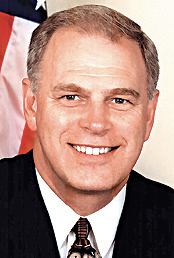Stimulus funds for Ohio schools to be changed

Ohio Governor Ted Strickland (D-Lisbon)
COLUMBUS (AP) — Gov. Ted Strickland plans to change the way his budget proposal accounts for hundreds of millions in federal stimulus dollars for schools to assure the dollars are spent legally, and keep the money from the state’s general fund.
In a March 16 memo to federal education officials, Strickland chief counsel Kent Markus said the change will be made as part of upcoming House revisions to Strickland’s $54 billion spending blueprint for the next two years, wishing to clarify that “our state’s spending of these funds is in alignment with current law.”
The memo was obtained by The Associated Press through a public records request.
Washington had warned states that a second round of education funding could be jeopardized if they don’t spend the first round as Congress and the president intended. Federal officials called for the money to go directly to school districts, and not to be used to balance state budgets or replace existing state education funding.
Strickland spokeswoman Amanda Wurst said Monday that an accounting change will move the $900 million-plus in federal stimulus funding out of the state’s general revenue fund and into special revenue.
Some lawmakers have said the move will create a gaping hole in Strickland’s budget, suddenly pulling millions from the pot he had intended to divide among public school districts through a newly crafted formula that lays out how much should be spent on each Ohio student. That per-pupil amount would vary, based on factors such as the district’s size, its wealth and the number of students needing special-education services.
In the memo to a pair of special advisers to Education Secretary Arne Duncan, Markus explained that the state has enough money to pay for all the components of the formula that are mandated in the first two years of the new standards. Those items would include offering universal all-day kindergarten.
He said districts will be encouraged to use stimulus dollars, when permissible, to pay for those elements of the plan that are not initially required, such as reduced class sizes, a lead teacher program and establishment of liaisons at each school to work with families and community.
“In future years, as these additional components become state mandates, it is our intention that state funding would be used to support these activities,” he wrote.
Markus said having districts use some of their federal dollars to meet future state mandates will avoid the “cliff effect” when stimulus funds are suddenly not available in the next state budget.
Strickland proposes a dramatic reinvention of Ohio’s public schools in answer to repeated court rulings that found the current system unconstitutional for its overreliance on property taxes.
The plan is centered on both a philosophical shift and a revised funding formula that boosts the state’s share of the cost and lowers what local taxpayers are expected to contribute to local schools.
Markus told education advisers Carmel Martin and Steve Robinson that the governor set aside state and federal education dollars in newly created line items in the state’s general fund as well as creating accounting structures to segregate them for tracking and reporting purposes.
“Despite this careful treatment, the presentation has led the media and other observers to believe that we were simply mixing [the federal] funds into a general state allocation pool although that was never the intent,” he wrote.
 43
43
